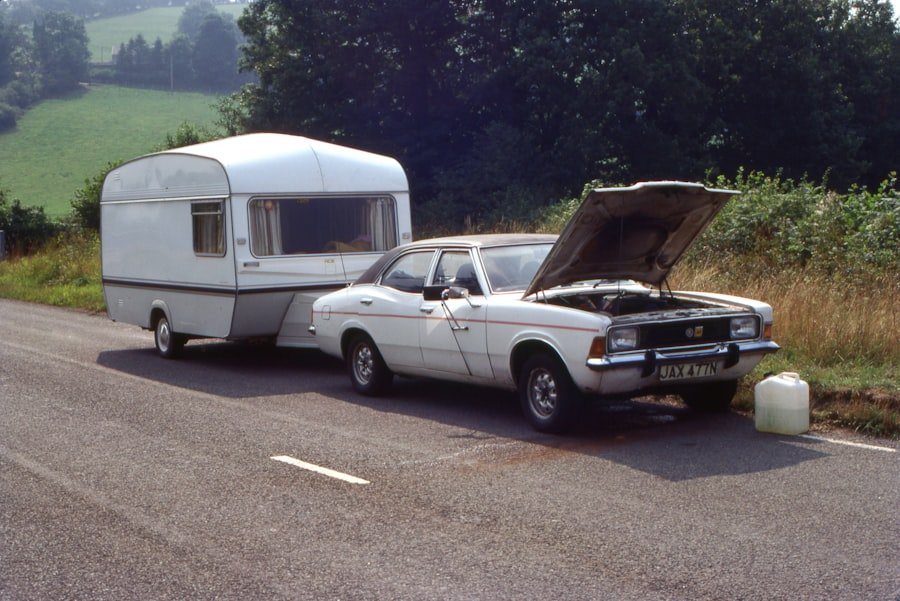When we embark on the journey of launching a project on Kickstarter, one of the first things we must consider is the fee structure associated with the platform. Understanding these fees is crucial for us as creators, as they can significantly impact our overall budget and the financial viability of our projects. Kickstarter has become a popular choice for many entrepreneurs, artists, and innovators looking to bring their ideas to life, but navigating the intricacies of its fee system can be daunting.
By familiarizing ourselves with the various fees involved, we can better prepare ourselves for a successful campaign. Kickstarter operates on a model that requires us to pay certain fees once our project is successfully funded. This means that we only incur costs if we reach our funding goal, which can be a comforting thought for many of us.
In this article, we will delve into the different types of fees associated with Kickstarter, how they affect our projects, and strategies for managing them effectively.
Key Takeaways
- Kickstarter charges a 5% platform fee on the total funds raised for successful projects
- In addition to the platform fee, there is a payment processing fee of 3% +
- Creators should consider additional fees such as taxes, currency conversion, and wire transfer fees
- To calculate total fees, creators should add the platform fee, payment processing fee, and any additional fees
- Fees can significantly impact a project's budget and should be carefully considered and managed
Understanding the Platform Fee
Accounting for the Platform Fee in Our Funding Strategy
While this may seem straightforward, it is essential for us to consider how this fee fits into our overall funding strategy. When we set our funding goal, we must account for this platform fee in addition to the costs associated with producing our project. For instance, if we aim to raise $10,000, we should be aware that Kickstarter will take $500 as their platform fee if we reach that goal.
The Impact on Our Funding Goal
This means that we need to raise at least $10,500 to cover both our project costs and the platform fee. By understanding this aspect of the fee structure, we can set more realistic funding goals that ensure we have enough resources to bring our projects to fruition.
Setting Realistic Funding Goals
By taking the platform fee into account, we can avoid underestimating the amount of funding we need to successfully complete our project. This helps us to set a more realistic funding goal, which in turn increases our chances of success on Kickstarter.
Understanding the Payment Processing Fee

In addition to the platform fee, we also need to be mindful of the payment processing fee that Kickstarter charges. This fee is applied to each transaction made by backers who pledge to support our project. The payment processing fee typically ranges from 3% to 5% of the total amount pledged, depending on the payment method used by our backers.
This means that if we raise $10,000 through pledges, we could be looking at an additional $300 to $500 in fees. Understanding this fee is crucial for us as it directly affects how much money we ultimately receive after our campaign concludes. For example, if we raise $10,000 and incur a 5% payment processing fee, we will only receive $9,500 after both the platform and payment processing fees are deducted.
This reality underscores the importance of accurately calculating our funding needs and setting a goal that accommodates these fees. By doing so, we can ensure that we have sufficient funds to cover production costs and other expenses associated with bringing our project to life.
Additional Fees to Consider
| Fee Type | Description |
|---|---|
| Processing Fee | A fee charged for processing a transaction |
| Late Payment Fee | A fee charged for making a payment after the due date |
| Overdraft Fee | A fee charged when an account balance goes below zero |
| Annual Fee | A yearly fee for using a credit card or service |
While the platform and payment processing fees are the most prominent costs associated with running a Kickstarter campaign, there are additional fees that we should keep in mind as well. For instance, if we plan to offer rewards or incentives for our backers, we need to factor in the costs of producing and shipping those rewards.
Moreover, if we are using third-party services or tools to manage our campaign or fulfill rewards, those costs can also add up. For example, if we decide to use a fulfillment service to handle shipping logistics for our rewards, we must account for those fees in our budget. By taking a comprehensive approach to budgeting and considering all potential expenses, we can avoid unpleasant surprises down the line and ensure that our project remains financially viable.
Tips for Calculating Total Fees
Calculating total fees for a Kickstarter campaign requires careful consideration and planning. One effective strategy is to create a detailed budget that outlines all potential costs associated with our project. This budget should include not only the platform and payment processing fees but also any additional expenses related to production, shipping, and fulfillment.
By having a clear picture of our financial landscape, we can set a more accurate funding goal that reflects our true needs. Another helpful tip is to use Kickstarter's built-in tools and resources to estimate fees based on different funding scenarios. The platform provides calculators that allow us to input various funding amounts and see how much we would ultimately receive after fees are deducted.
This feature can be invaluable in helping us determine a realistic funding goal while ensuring that we account for all potential costs associated with our project.
How Fees Impact Your Project's Budget

Understanding the Risks of Ignoring Fees
If we fail to account for fees adequately, we risk falling short of our funding needs or facing unexpected financial challenges during production.
The Consequences of Inadequate Planning
For instance, if we set an ambitious funding goal without considering the fees involved, we may find ourselves in a situation where we raise enough money on paper but end up with insufficient funds after fees are deducted. This scenario can lead to delays in production or even force us to scale back on certain aspects of our project.
Proactive Planning for Success
By proactively addressing these potential pitfalls and incorporating fees into our budgeting process from the outset, we can mitigate risks and set ourselves up for success.
Comparing Fees on Other Crowdfunding Platforms
As we explore crowdfunding options beyond Kickstarter, it becomes evident that different platforms have varying fee structures that can influence our decision-making process. For example, some platforms may charge lower platform fees but higher payment processing fees or vice versa. By comparing these fee structures across different platforms, we can identify which option aligns best with our project's financial needs.
Additionally, some platforms may offer unique features or benefits that justify their fees. For instance, certain crowdfunding sites provide enhanced marketing support or access to specialized communities that could help us reach a broader audience. By weighing these factors against the associated costs, we can make informed choices about where to launch our projects and maximize our chances of success.
Strategies for Managing and Minimizing Fees
To effectively manage and minimize fees associated with crowdfunding campaigns, there are several strategies we can employ. First and foremost, setting a realistic funding goal that accounts for all potential costs is crucial. By doing so, we can ensure that we have enough resources to cover both production expenses and platform fees without compromising the quality of our project.
Another strategy involves carefully selecting reward tiers that align with our budget while still appealing to backers. Offering rewards that are cost-effective to produce and ship can help us minimize expenses while maximizing support from backers. Additionally, exploring partnerships with local businesses or suppliers may provide opportunities for discounts on materials or services needed for our project.
Finally, maintaining open communication with backers throughout the campaign can foster trust and encourage continued support. By keeping them informed about how their contributions will be used and addressing any concerns they may have regarding fees or expenses, we can build a strong community around our project that ultimately contributes to its success. In conclusion, understanding Kickstarter's fee structure is essential for us as creators looking to launch successful crowdfunding campaigns.
By familiarizing ourselves with platform fees, payment processing fees, and additional costs associated with rewards and fulfillment, we can make informed decisions about budgeting and funding goals. With careful planning and strategic management of these fees, we can navigate the crowdfunding landscape effectively and bring our creative visions to life.
FAQs
What are Kickstarter fees?
Kickstarter fees are the costs associated with using the Kickstarter platform to raise funds for a project or business idea. These fees cover various aspects of using the platform, including processing payments and providing customer support.
What fees are associated with using Kickstarter?
Kickstarter charges a 5% fee on the total funds raised for a project, as well as payment processing fees, which are typically around 3-5% of the total funds raised.
How are Kickstarter fees calculated?
The 5% fee is calculated based on the total funds raised for a project, while the payment processing fees are calculated based on the amount of each individual pledge.
Are there any other costs associated with using Kickstarter?
In addition to the fees charged by Kickstarter, creators may also incur costs related to fulfilling rewards for backers, as well as any taxes or legal fees associated with their project.
When are Kickstarter fees charged?
Kickstarter fees are charged when a project is successfully funded, and the funds are collected from backers. Payment processing fees are also charged at this time.
Are there any additional fees for unsuccessful projects on Kickstarter?
No, Kickstarter does not charge any fees for projects that do not meet their funding goal. However, creators will not receive any funds if their project is not successfully funded.



